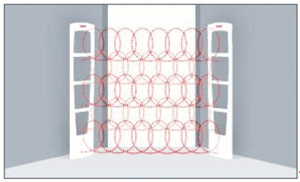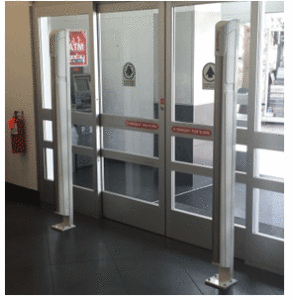 According to the National Association for Shoplifting Prevention men, women, and juveniles shoplift equally. The gender, nor race is more prominent than the other, yet many minorities are targeted and harassed when shopping at a retail store because of their race. Shoplifting is a crime, and the retail industry loses billions a dollars yearly due to shoplifting and employee theft, but targeting minorities because of their race is a financial detriment to many retail stores.
According to the National Association for Shoplifting Prevention men, women, and juveniles shoplift equally. The gender, nor race is more prominent than the other, yet many minorities are targeted and harassed when shopping at a retail store because of their race. Shoplifting is a crime, and the retail industry loses billions a dollars yearly due to shoplifting and employee theft, but targeting minorities because of their race is a financial detriment to many retail stores.
For more about this and other topics, follow the links below.
Thieves raising a glass to LCBO policy
TORONTO – Thieves walk into an LCBO, grab a shopping bag and fill it.
Often the bottles are in the $40 to $80 range — Bacardi, Smirnoff, Grey Goose and other popular brands — and they’re swiped daily by the dozens.
Shoplifters confidently make their way to the exit, not even approaching the check-out.
Within seconds, they’ve made their getaway.
And they know LCBO employees can’t do anything to stop them.
According to the LCBO’s theft policy, workers shall not attempt to detain or arrest thieves. They’re suppose to alert police or security personnel.
“It’s very clear they know there’s a loophole,” said a Toronto-area LCBO employee, who agreed to be interviewed on the condition of anonymity.
Sobeys ordered to pay $21,000 in racial profiling case of Halifax-area woman
The human rights board decided in Andrella David’s favour this fall, and announced a remedy Friday.
A Halifax-area woman who was racially profiled while shopping at a Sobeys store will receive more than $21,000 from the company.
Marion Hill, chair of the independent human rights board of inquiry into Andrella David’s case against Sobeys Group Inc., issued a decision on remedy late Thursday.
“Consumer racial profiling is a significant issue in Nova Scotia most often targeting African Nova Scotians and members of the First Nations communities,” Christine Hanson, director of the Nova Scotia Human Rights Commission said in a release Friday.
“I’m pleased to see that Ms. David’s experience has brought awareness to the issue, and the commission looks forward to working with retailers in the coming months to help prevent similar occurrences.”
Last October, Hill concluded in her original decision that David of Upper Hammonds Plains had been discriminated against on the basis on her African Nova Scotian race and/or perception of income, when an assistant manager at the Sobeys accused her of shoplifting multiple times in 2009 and said they had her on surveillance tape.
8 nabbed after cops intercept multi-state credit card fraud rings
Gloucester Township Police were conducting proactive retail patrol on three separate incidents leading to the arrest of eight people and the recovery of a stolen handgun.Authorities said they were able to interrupt two multi-state credit card rings and prevent thousands of dollars in retail theft and fraud following three separate investigations.
Police were conducting surveillance at the Gloucester Premium Outlets April 26 as a result of ongoing retail theft.
While investigating, police saw four males attempting to use multiple credit and gift cards to purchase high-end merchandise.
Several transactions were denied and after approaching the men, one tried to hide the credit and gift cards in mulch landscaping outside of the store, according to police.
The four men were later found in possession of more than $6,000 worth of merchandise that police believe was fraudulently purchased in different stores.
Detectives seized multiple stolen credit and gift cards, a laptop and encrypted USB drive that was used to load stolen credit card account numbers onto the cards.

 My grandparents owned a small hardware store back in the late 1950s. Back then, when my grandpa left at 5pm, he simply locked the back door, gathered his belongings and left, locking the double glass front door behind him with nothing more than a standard lock that you’d find on any home at the time. The front of the store was nothing but glass. He had cash and at least $100k worth of merchandise on the shelves. Wouldn’t it be nice if things could go back to the way they were back then? Could you imagine if you left your store this soft nowadays? Burglaries happen, and they happen often. Over the past ten years as a Regional LP manager for my company, I’ve had it happen a total of 12 times. About once a year, or so, someone, somewhere across my region, breaks into one of my stores; or at least tries to do so. We have a lot of things that we implement to prevent this from happening, so when someone is able to breach our perimeter, it’s usually caused by human error.
My grandparents owned a small hardware store back in the late 1950s. Back then, when my grandpa left at 5pm, he simply locked the back door, gathered his belongings and left, locking the double glass front door behind him with nothing more than a standard lock that you’d find on any home at the time. The front of the store was nothing but glass. He had cash and at least $100k worth of merchandise on the shelves. Wouldn’t it be nice if things could go back to the way they were back then? Could you imagine if you left your store this soft nowadays? Burglaries happen, and they happen often. Over the past ten years as a Regional LP manager for my company, I’ve had it happen a total of 12 times. About once a year, or so, someone, somewhere across my region, breaks into one of my stores; or at least tries to do so. We have a lot of things that we implement to prevent this from happening, so when someone is able to breach our perimeter, it’s usually caused by human error. It was 4:30am on a Tuesday morning. My company cell phone pierced through the quiet halls of my house. At first, I didn’t get out of bed; perhaps it was a wrong number. Silence. As I doze back off, I hear the familiar tone once again. Who could be calling me and for what reason at this hour? I let it ring. I hear the chirp of the voicemail. Before I can muster the energy to get out of bed, I hear my personal phone ringing. This one is next to me on the night stand. Something is wrong, I immediately think to myself. When I reach for my phone in the middle of the dark room, eyes still blurry, I see the caller ID. It’s a sheriff’s deputy that I’m good friends with. My heart is in my throat as I answer. “You’re morning crew was just robbed at gunpoint. Get to the store now.”
It was 4:30am on a Tuesday morning. My company cell phone pierced through the quiet halls of my house. At first, I didn’t get out of bed; perhaps it was a wrong number. Silence. As I doze back off, I hear the familiar tone once again. Who could be calling me and for what reason at this hour? I let it ring. I hear the chirp of the voicemail. Before I can muster the energy to get out of bed, I hear my personal phone ringing. This one is next to me on the night stand. Something is wrong, I immediately think to myself. When I reach for my phone in the middle of the dark room, eyes still blurry, I see the caller ID. It’s a sheriff’s deputy that I’m good friends with. My heart is in my throat as I answer. “You’re morning crew was just robbed at gunpoint. Get to the store now.”
 Employee theft continues to rise. In some retail settings it’s surpassed customer theft. There are a variety of reasons for the increase. One of them is that many managers have a hard time believing that “My people would do such a thing”. And because they have a hard time believing it they don’t take steps to combat it.
Employee theft continues to rise. In some retail settings it’s surpassed customer theft. There are a variety of reasons for the increase. One of them is that many managers have a hard time believing that “My people would do such a thing”. And because they have a hard time believing it they don’t take steps to combat it.
 Are you confused about how to stop shoplifters? Many Retailers are. Often I hear something like “I have a CCTV camera system to stop shoplifters”. The reality is that shoplifters couldn’t care less. Cameras are a very tiny deterrent to a shoplifter. They know you do not have the time or payroll dollars to actively watch. And it is easy enough to create a diversion or simply take your merchandise and move to another location in your store that does not have camera coverage.
Are you confused about how to stop shoplifters? Many Retailers are. Often I hear something like “I have a CCTV camera system to stop shoplifters”. The reality is that shoplifters couldn’t care less. Cameras are a very tiny deterrent to a shoplifter. They know you do not have the time or payroll dollars to actively watch. And it is easy enough to create a diversion or simply take your merchandise and move to another location in your store that does not have camera coverage.  EAS is great isn’t it? For the most part, if someone is stealing product “X,” you slap on a quick tag or label and you see a pretty substantial reduction in shrink (for the most part.… Live in the real world). As my LP career has progressed over the years, I’ve seen EAS change drastically. I’ve also seen what retailers apply EAS tags to change as well. Often times, I scratch my head in disbelief at the ideas that come out sometimes and others, I pull my hair out because we could have been more proactive with tag placement. I’ve also seen some fantastic ideas from my store teams on some not so standard tagging procedures.
EAS is great isn’t it? For the most part, if someone is stealing product “X,” you slap on a quick tag or label and you see a pretty substantial reduction in shrink (for the most part.… Live in the real world). As my LP career has progressed over the years, I’ve seen EAS change drastically. I’ve also seen what retailers apply EAS tags to change as well. Often times, I scratch my head in disbelief at the ideas that come out sometimes and others, I pull my hair out because we could have been more proactive with tag placement. I’ve also seen some fantastic ideas from my store teams on some not so standard tagging procedures.